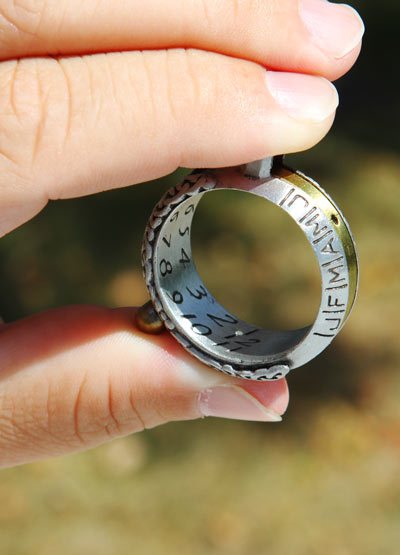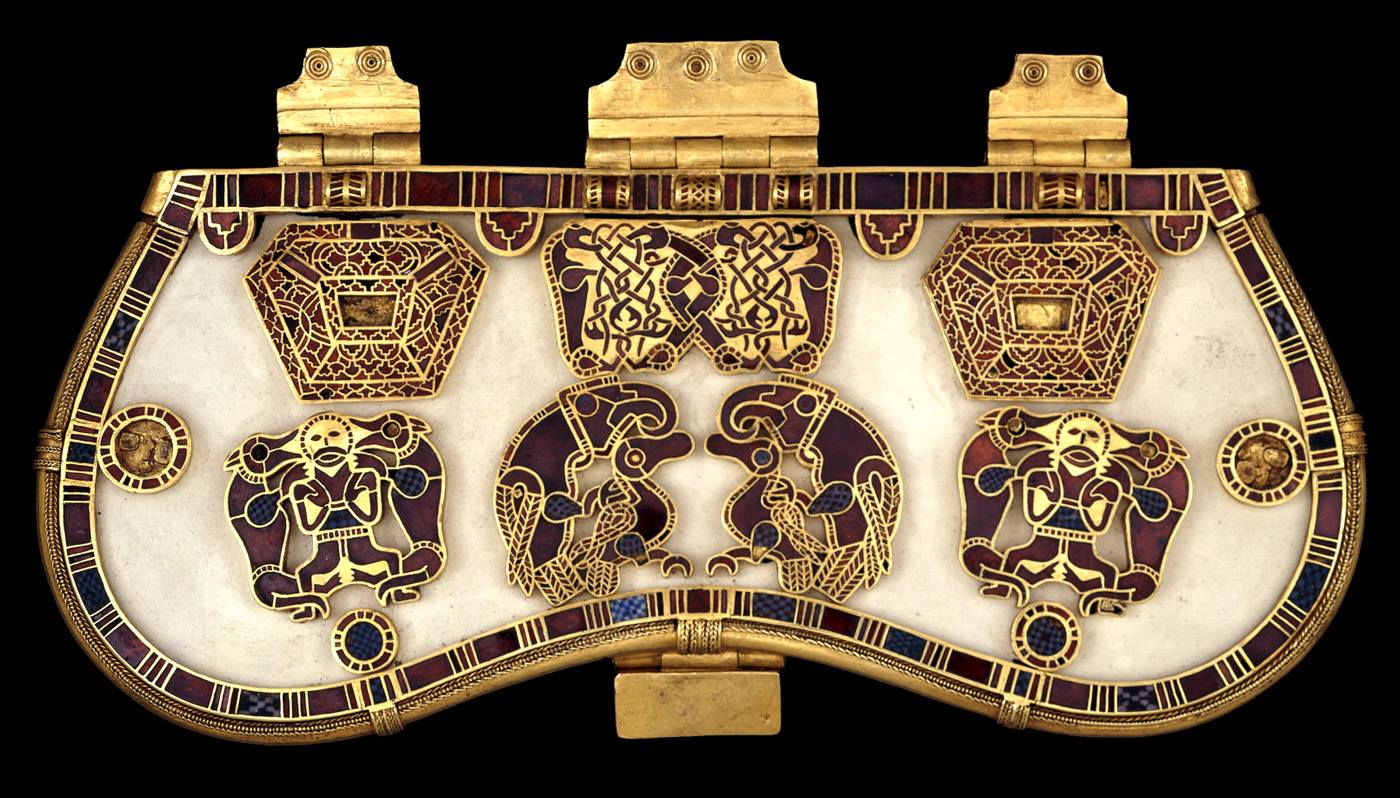https://theartssociety.org/arts-news-features/become-instant-expert-…-nation’s-cathedral-treasures
During excavations in Canterbury’s Great Cloister in 1938 this pocket-sized sundial, just over 6cm in length, was discovered.
It is a unique survival from Anglo-Saxon times and is made of a tablet of silver, with a cap and chain of gold and a separate gold pin. The cap is decorated with interlacing; its end is formed as the head of a beast and the chain and pin are also finished with beasts’ heads. Two of the heads still have tiny gems for eyes. Abbreviated names of the month in Latin are inscribed in pairs in three lines on the broad faces of the tablet. Around the sides the words‘Health to the maker. Peace to the owner’ are incised in Latin.
The sundial was probably made in the 10th century and is an intricate piece of design. The pin was placed in the hole for the relevant month. When the sundial was suspended from the chain, it used the altitude of the sun to calculate three separate times of the day. The calculations are likely to have been used to indicate times for prayer as part of the seven daily divine offices.
I would totally buy a modern reproduction of this. So cool.
I found a sundial ring somewhere a few years ago, I think it was one of these …

how does this work?
This video goes over a few pocket sundials and how they work
Im guessing you adjust the ring to the current month, and that’ll show you a time of day.
This would make a great keyring.
This is cool
Impressive workmanship
That is a super interesting wire chain design. I have never thought about chains I could actually make and might be useful but this one is easy for me to understand and replicate.
I wonder how the block was made. Probably an investment casting. Was etching silver a thing 1k years ago? The way the fob end was formed inside would also be interesting to know.





